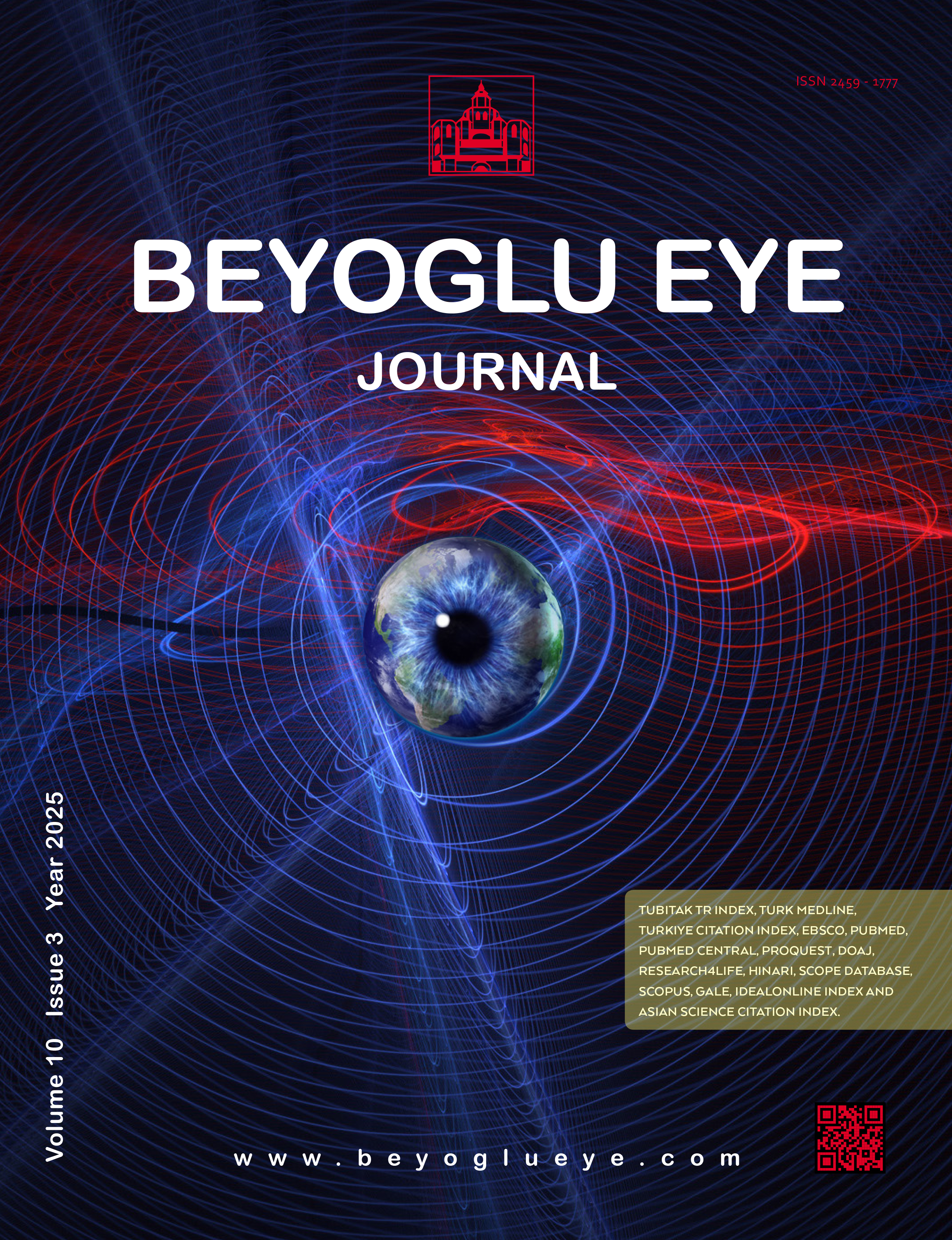
Comparison of the Depth of the Stromal Demarcation Line and Clinical Outcomes in Corneal Crosslinking Treatment with Hydroxypropyl Methylcellulose-Based and Vitamin E-TPGS-Based Riboflavin Solutions
Hafize Gokben Ulutas1, Ayse Balikci Tufekci21Department of Ophthalmology, University of Health Sciences, Bursa City Hospital, Bursa, Türkiye2Department of Ophthalmology, University of Health Sciences, Ankara Training and Research Hospital, Ankara, Türkiye
OBJECTIVES: This study aims to compare the visual and topographic results and the depth of demarcation line in patients who underwent epithelial-off-cross-linking (CXL) with riboflavin solutions containing D alpha-tocopheryl polyethylene-glycol 1000 succinate (Vitamin E-TPGS) and 1.1% hydroxypropyl methylcellulose (HPMC).
METHODS: Patients with progressive keratoconus, 26 treated with HPMC (Group 1) and 34 treated with Vitamin E-TPGS (Group 2), were evaluated retrospectively. Best corrected visual acuity, spherical equivalent, refractive cylinder, and corneal topography parameters (keratometry of flat and steep meridians (K1 and K2), maximum keratometry (Kmax), central, thinnest, and apical corneal thickness) at baseline and post-operative follow-up visits were compared (1, 3, 6, and 12 months). Corneal stromal demarcation line depth (DLD) was measured centrally, nasally, and temporally (1.5 mm and 3 mm distance from the center of the cornea) by anterior segment optical coherence tomography at 1 month post-oper-atively, and changes in endothelial cell density (ECD) at 6 months were compared between the two groups.
RESULTS: There was no difference between the two groups in terms of age and gender. The mean DLD was deeper in group 1 (325.95±76.55 µm) than in group 2 (267.94±54.2 µm) (p=0.002). In the 3rd month, K1, K2, and Kmax changes, while a decrease was observed in Group 1 compared to the baseline; an increase was observed in Group 2 (all p<0.05). At the end of the 1 year, K1, K2, and Kmax were decreased in both groups. There was no difference in ECD change between baseline and 6 months in both riboflavin solutions (p=0.12).
DISCUSSION AND CONCLUSION: HPMC-based riboflavin appears to be associated with a deeper demarcation line than Vitamin E-TPGS-based riboflavin. While a decrease in K values was observed in the earlier period in HPMC, no difference was observed between Vitamin E-TPGS and HPMC at the 12th month in terms of efficacy. Both riboflavin solutions were safe for the endothelium.
Manuscript Language: English









